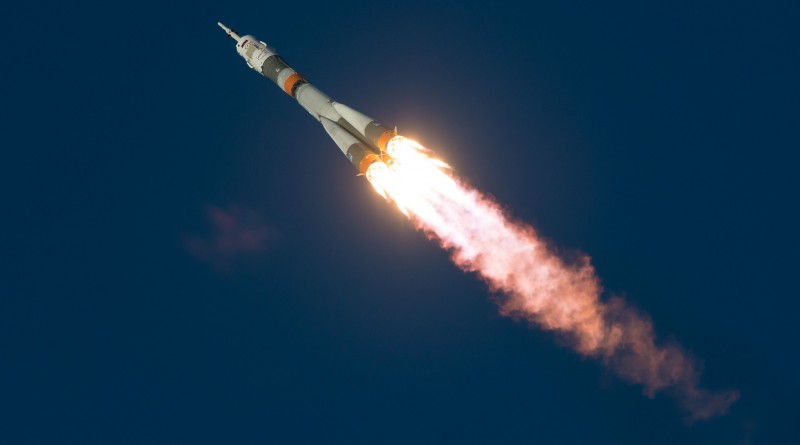2015 Space Launch Statistics
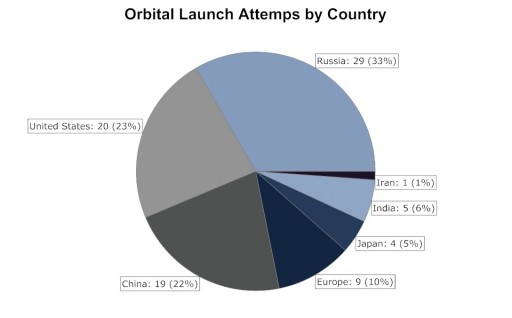 The year 2015 saw a total of 87 known orbital launch attempts operated by seven nations from space ports in eight countries. 2015 ranks second in the current century in terms of the total number of orbital launch attempts, falling short to 92 launches in 2014 that set a record for the last 20 years. In 2015, Russia remains in the lead with 29 orbital launch attempts, a position it maintained for for 13 consecutive years. The United States conducted 20 orbital launches and are in second place, though China’s 19 successful flights are sufficient to pass the U.S. in the number of successful missions as American launchers encountered two vehicle failures over the course of the year. European vehicles flew nine times this year while India continues a slow increase in the number of launches, coming in at five this year. Japanese launchers flew four times including the country’s first fully commercial mission. Iran’s single space launch in 2015 brings this year’s total to 87 including five failed missions.
The year 2015 saw a total of 87 known orbital launch attempts operated by seven nations from space ports in eight countries. 2015 ranks second in the current century in terms of the total number of orbital launch attempts, falling short to 92 launches in 2014 that set a record for the last 20 years. In 2015, Russia remains in the lead with 29 orbital launch attempts, a position it maintained for for 13 consecutive years. The United States conducted 20 orbital launches and are in second place, though China’s 19 successful flights are sufficient to pass the U.S. in the number of successful missions as American launchers encountered two vehicle failures over the course of the year. European vehicles flew nine times this year while India continues a slow increase in the number of launches, coming in at five this year. Japanese launchers flew four times including the country’s first fully commercial mission. Iran’s single space launch in 2015 brings this year’s total to 87 including five failed missions.
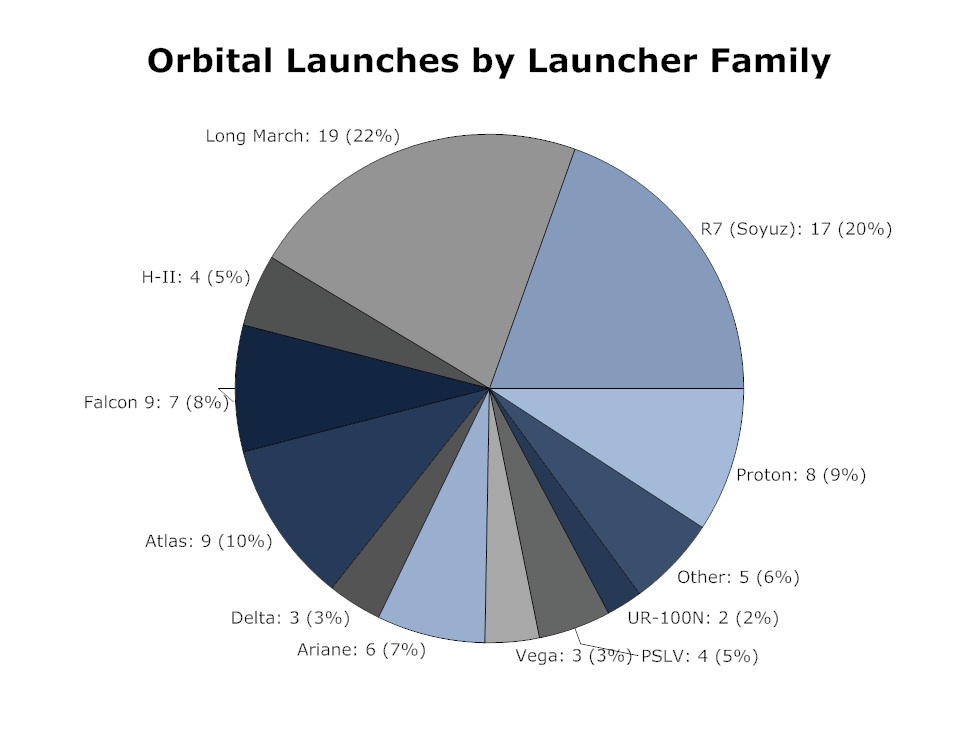
| Country | Total Launches | Failures |
|---|---|---|
| Russia | 29 | 3 |
| USA | 20 | 2 |
| China | 19 | 0 |
| Europe | 9 | 0 |
| India | 5 | 0 |
| Japan | 4 | 0 |
| Iran | 1 | 0 |
| Total | 87 | 5 |
Launch Vehicle Configuration
| Launch Vehicle Configuration | Total Launches | Failures |
|---|---|---|
| Soyuz U | 3 | |
| Soyuz FG | 4 | |
| Soyuz 2-1A (ST-A) | 4 | 1 |
| Soyuz 2-1B (ST-B) | 5 | |
| Soyuz 2-1v | 1 | 1 |
| Proton-M / Briz-M | 7 | 1 |
| Proton-M / DM-03 | 1 | |
| Zenit-3SLBF | 1 | |
| Rockot | 2 | |
| Dnepr | 1 | |
| Atlas V 401 | 4 | |
| Atlas V 421 | 2 | |
| Atlas V 501 | 1 | |
| Atlas V 551 | 2 | |
| Delta IV M+(4,2) | 1 | |
| Delta IV M+(5,4) | 1 | |
| Delta 7320-10C | 1 | |
| Falcon 9 v1.1 | 6 | 1 |
| Falcon 9 FT | 1 | |
| Super Strypi / SPARK | 1 | 1 |
| Long March 2D | 4 | |
| Long March 3B | 8 | |
| Long March 3C | 1 | |
| Long March 4B | 2 | |
| Long March 4C | 2 | |
| Long March 6 | 1 | |
| Long March 11 | 1 | |
| Ariane 5 ECA | 6 | |
| Vega | 3 | |
| H-IIA 202 | 2 | |
| H-IIA 204 | 1 | |
| H-IIB | 1 | |
| PSLV-CA | 1 | |
| PSLV-XL | 3 | |
| GSLV Mk. II | 1 | |
| Safir | 1 |
2015 Space Launch Failures
| Launch Vehicle | Date | Payload | Time of Failure | Probable Cause |
|---|---|---|---|---|
| Soyuz 2-1A | Apr 28 | Progress M-27M | T+526 Seconds | Frequency Dynamic Oscillations of the Block I Third Stage - Progress stack arising at the moment of engine shutdown, building up due to resonance leading to damage to rocket body and spacecraft at the moment of separation |
| Proton-M | May 16 | MexSat-1 (Centenario) | T+497 Seconds | Deficiencies of RD-0214 Steering Engine Turbopump design & materials in borderline thermal environments leading to vibrations and damage to the engine - imbalance of turbine shaft in flight due to degradation of internal materials at high temperatures. |
| Falcon 9 v1.1 | June 28 | Dragon CRS-7 | T~138 Seconds | Failure of structural strut within second stage LOX Tank holding a Helium pressurant tank in place. The detachment of the tank resulted in a rapid overpressurization and destruction of the oxidizer tank leading to a loss of structural integrity on the forward section of the rocket |
| Super Strypi (SPARK) - Inaugural Flight | Nov 04 | HiakaSat & Others | Approx. T+1 Minute | Not yet Disclosed |
| Soyuz 2-1v | Dec 5 | Kanopus ST No. 1 & KYuA No. 1 | S/C Separation | One of four Separation Pyros failed to initiate, Primary Payload remained attached to Upper Stage. |
Orbital Launches in 2015 - Summary
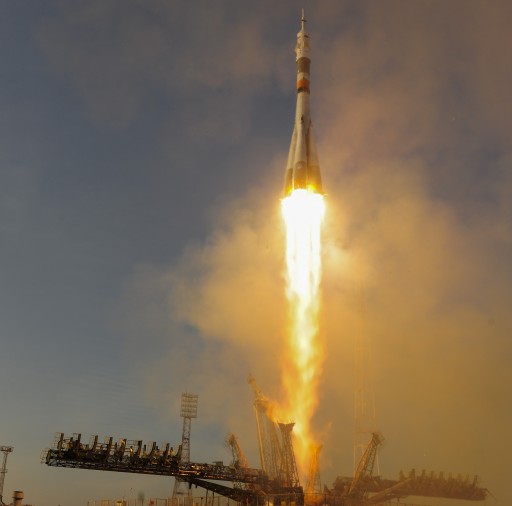
Russia remains in the lead in 2015 with 29 orbital launches and 26 successes, maintaining its leading position for over a decade, though going through a bit of an up and down in 2015 as both of Russia’s workhorse launchers, Soyuz and Proton, had to deal with failures over the course of the year.
On the Russian side, the Soyuz launcher remains the most launched vehicle family, having delivered four three-person crews to orbit this year and maintaining a steady chain of supplies to the Space Station, despite running into trouble on a Progress cargo-delivery mission that failed in April at the moment of third stage shutdown and spacecraft separation due to unforeseen dynamics associated with the modified third stage of the Soyuz 2 rocket. Five Soyuz launches in 2015 were dedicated to military missions launching from the Plesetsk Cosmodrome with a focus on reconnaissance missions.
Soyuz 2-1v, a highly modified version of the Soyuz suitable for small payloads, conducted one flight – ending in failure at the point of spacecraft separation which could not be accomplished due to a defective separation mechanism leading to the untimely demise of the Kanopus ST submarine-watching satellite while a secondary payload was released into orbit.
>>Visit our Launch Vehicle Library for detailed technical information on all rockets flown in 2015
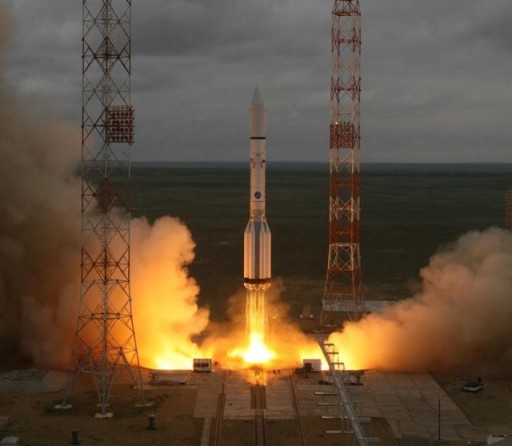
All eight Proton launches this year lifted communications satellites either for the military or the commercial sector. In May, Proton encountered a repeat failure involving the third stage steering engine that had also claimed the loss of an Ekspress communications satellite in 2014. Looking at the positive, Proton’s failures illuminated a design issue with the turbopump of the third stage steering engine which had caused a failure in the 1980s, but went unnoticed due to a lack of sensors and could have led to even more failures if not uncovered by Proton’s recent troubles.
Proton returned to flight in August and successfully flew out the remainder of its 2015 manifest that saw four government-operated missions and four commercial launches handled by International Launch Services
Russia’s Zenit rocket conducted a single mission in 2015 lifting a weather satellite to Geostationary Orbit in what may well be the final launch of the Russian-Ukrainian Zenit rocket that found itself in the midst of the arising conflict between the two countries. The light-lifters in the Russian rocket fleet conducted three missions – Dnepr lofted a remote sensing satellite for South Korea while Rockot flew twice to deliver groups of three communications satellites to low orbits – three under civilian and three under military operation.
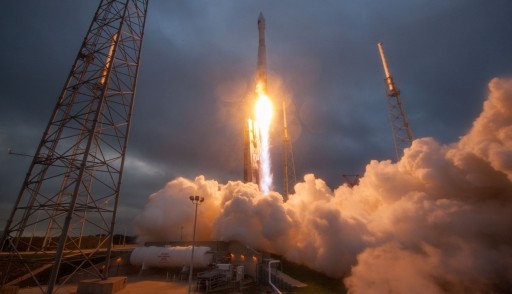
Atlas V remains the most-flown American rocket this year with nine successful missions including a rare commercial satellite launch with Morelos 3 in a manifest still dominated by government-contracted flights, lofting military satellites for communications, navigation, and reconnaissance as well as the semi-classified X-37B orbital test vehicle. Atlas V launched one NASA mission in 2015 – a package of four spacecraft dispatched to elliptical orbits to conduct a study of Earth’s magnetosphere. A first for the workhorse rocket came in December when it made its debut launch to the International Space Station, sending the Cygnus OA-4 spacecraft into Low Earth Orbit.
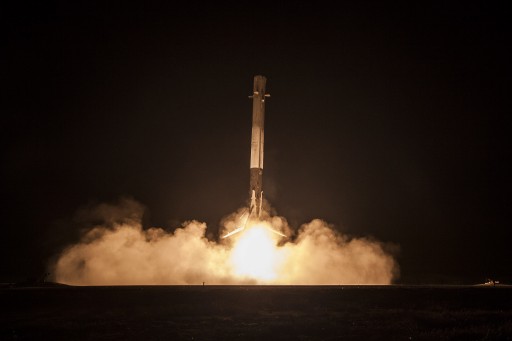
Falcon 9 could only make seven launches this year, given the six-month stand-down in the wake of the CRS-7 failure that dampened SpaceX’s aspirations of establishing a rapid turnaround between launches to tackle the company’s booked manifest. SpaceX came back in December and left a mark in history when the Falcon 9 first stage booster conducted a successful return to an onshore landing after delivering the second stage and 11 Orbcomm satellites on their way to orbit. This marked the first successful propulsive landing of a rocket stage involved in an orbital mission.
SpaceX performed two successful ISS cargo missions in 2015, sent the Deep Space Climate Observatory on its way, lifted a pair of communications satellites in a single launch and delivered Turkmenistan’s first satellite to orbit.
The Delta family conducted three missions, two Delta IV launches with the GPS IIF-9 and WGS-7 satellites and a lone Delta II mission dedicated to NASA’s SMAP mission as the venerable launcher approaches its retirement. The only other U.S. launcher to fly in 2015 was the light-lift Super Strypi rocket that was hoped to become a go-to vehicle for cost-effective launches of small satellites and multi-satellite missions, though the debut mission of the rocket from Kauai failed after only one minute for reasons that have yet to be uncovered.
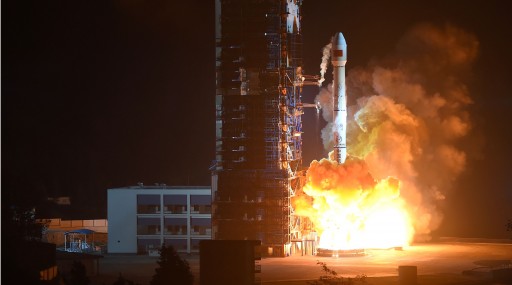
China closed out another very successful year with a 100% success rate in its 19 orbital launches, most of which occurred in the second half of the year in a rapid launch pace. In particular, the Long March 3B rocket employed to lift heavy Geostationary Satellites, flew seven times in the last four months of the year. In 2015, China debuted the Long March 11 and Long March 6 rockets – the light-lift members of the country’s new line of rockets to be inaugurated over the coming years. Also, 2015 saw the inauguration of the Beidou-3 series of navigation satellites that will continue deployment in the years to come.
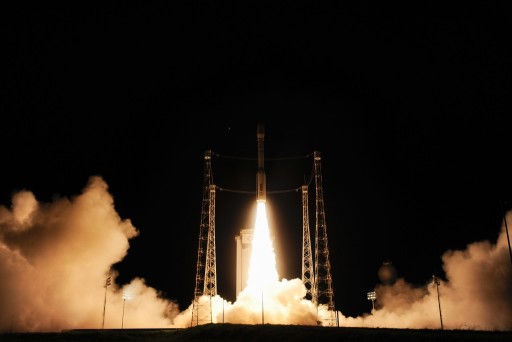
Europe’s workhorse rocket, Ariane 5, completed six flights this year, all dedicated to dual-payload launches delivering communications satellites to Geostationary Transfer Orbit with the lone exception of the MSG-4 meteorological satellite. Vega launched three times this year, starting with the launch of the Intermediate Experimental Vehicle that demonstrated new re-entry technologies. Vega successfully launched the next satellite in the Copernicus Earth Observation satellite fleet and closed its year with the launch of the LISA Pathfinder, currently on its way to the L1 Sun-Earth Lagrange Point where it will test out cutting-edge technologies for the measurement of gravitational waves.
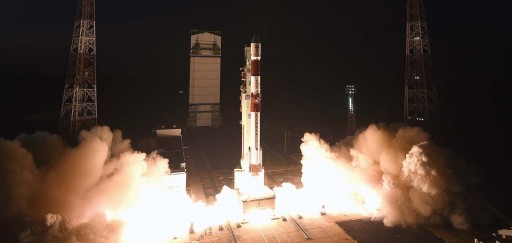
India conducted five successful launches this year using the Polar Satellite Launch Vehicle for four flights and the Geostationary Satellite Launch Vehicle for one mission, continuing a slow build-up in launch rates, to be continued next year that has been outlined to be India’s busiest yet. In 2015, PSLV launched one of India's indigenous navigation satellites, delivered a trio of Earth Observation satellites to orbit, conducted a flight carrying six spacecraft for Singapore and lifted into orbit the AstroSat observatory for a science mission in high-energy astrophysics.
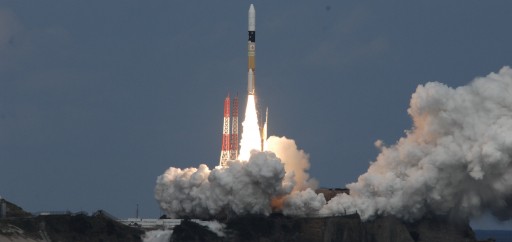
Japan can also look back at a successful year in the space launch business with three missions of the H-IIA rocket and a single flight using the larger H-IIB to deliver the HTV-5 cargo craft to orbit for a flight to the Space Station. H-IIA lifted a pair of Information Gathering Satellites and performed its first fully commercial mission when launching the Telstar 12V satellite, also debuting a modified upper stage suitable for long-coast missions to Geostationary Transfer Orbits.
2015 Orbital Launch List
| Date | Time | Launch Vehicle | Payloads | Launch Site | Outcome |
|---|---|---|---|---|---|
| Jan 10 | 09:47:10 | Falcon 9 v1.1 | Dragon CRS-5 (+ CubeSats: AESP-14, Flock 1d'-1 & 2) | Cape Canaveral SLC-40 | S |
| Jan 21 | 01:04:00 | Atlas V 551 | MUOS 3 | Cape Canaveral SLC-41 | S |
| Jan 31 | 14:22:00 | Delta 7320-10C | SMAP (+ CubeSats: FIREBIRD II A & B, GRIFEX, ExoCube) | Vandenberg Air Force Base SLC-2W | S |
| Feb 1 | 01:21:00 | H-IIA 202 | IGS Radar Spare | Tanegashima Space Center | S |
| Feb 1 | 12:31:00 | Proton-M/Briz-M | Inmarsat 5-F2 | Baikonur Cosmodrome Site 200/39 | S |
| Feb 2 | 08:52 | Safir | Fajr | Semnan, Iran | S |
| Feb 11 | 13:40:00 | Vega | IXV (Intermediate Experimental Vehicle) | Guiana Space Center, ZLV | S |
| Feb 11 | 23:03:42 | Falcon 9 v1.1 | DSCOVR (Deep Space Climate Observatory) | Cape Canaveral SLC-40 | S |
| Feb 17 | 11:00:17 | Soyuz-U | Progress M-26M | Baikonur Cosmodrome Site 1/5 | S |
| Feb 27 | 11:01:36 | Soyuz-2-1A | Bars-M No. 1 (Kosmos-2503) | Plesetsk Cosmodrome Site 43/4 | S |
| Mar 2 | 03:50:00 | Falcon 9 v1.1 | ABS-3A & EUTELSAT 115 West B | Cape Canaveral SLC-40 | S |
| Mar 13 | 02:44 | Atlas V 421 | 4 MMS Spacecraft (Magnetospheric Multiscale Mission) | Cape Canaveral SLC-41 | S |
| Mar 18 | 22:05:00 | Proton-M/Briz-M | Ekspress AM-7 | Baikonur Cosmodrome Site 200/39 | S |
| Mar 25 | 18:36 | Delta IV M+(4,2) | GPS IIF-9 | Cape Canaveral SLC-37B | S |
| Mar 25 | 22:08:53 | Dnepr | KOMPSAT-3A | Yasny Launch Base Site 370/13 | S |
| Mar 26 | 01:21 | H-IIA 202 | IGS Optical-5 | Tanegashima Space Center | S |
| Mar 27 | 19:42:57 | Soyuz-FG | Soyuz TMA-16M | Baikonur Cosmodrome Site 1/5 | S |
| Mar 27 | 21:46:18 | Soyuz-ST-B | Galileo FM-3 & FM-4 | Guiana Space Center, ELS | S |
| Mar 28 | 11:49 | PSLV-XL | IRNSS-1D | Satish Dhawan Space Center, India | S |
| Mar 30 | 13:52:30 | Long March 3C/YZ-1 | Beidou-3 I1S | Xichang Satellite Launch Center, China | S |
| Mar 31 | 13:47:56 | Rockot | 3 Gonets-M (No. 21, 22 & 23) & Kosmos-2504 | Plesetsk Cosmodrome Site 133/3 | S |
| Apr 14 | 20:10:41 | Falcon 9 v1.1 | Dragon CRS-6 (+CubeSats: 14 Flock-1e, Arkyd-3R & Centennial 1) | Cape Canaveral SLC-40 | S |
| Apr 26 | 20:00:07 | Ariane 5 ECA | Thor 7 & Sicral 2 | Guiana Space Center, ELA-3 | S |
| Apr 27 | 23:03:00 | Falcon 9 v1.1 | TurkmenÄlem-52E/MonacoSAT | Cape Canaveral SLC-40 | S |
| Apr 28 | 07:09:50 | Soyuz-2-1A | Progress M-27M | Baikonur Cosmodrome Site 31/6 | X |
| May 16 | 05:47:39 | Proton-M/Briz-M | Mexsat-1 (Centenario) | Baikonur Cosmodrome Site 200/39 | X |
| May 20 | 15:05:05 | Atlas V 501 | X-37B OTV-4 (+CubeSats: USS Langley, Optical CubeSat 1, 2 & 3, ParkinsonSat, BRICSat-P, GEARRS-2, Aerocube 8A & 8B, LightSail-A, ULTRASat) | Cape Canaveral SLC-41 | S |
| May 27 | 21:16:07 | Ariane 5 ECA | DirecTV-15 & SKY Mexico-1 | Guiana Space Center, ELA-3 | S |
| Jun 5 | 15:23:54 | Soyuz-2-1A | Kobalt-M No. 10 (Kosmos-2505) | Plesetsk Cosmodrome Site 43/4 | S |
| Jun 23 | 01:51:58 | Vega | Sentinel-2A | Guiana Space Center, ZLV | S |
| Jun 23 | 16:44:00 | Soyuz-2-1B | Persona-1 No. 3 (Kosmos-2506) | Plesetsk Cosmodrome Site 43/4 | S |
| Jun 26 | 06:22:04 | Long March 4B | GaoFen-8 | Taiyuan Satellite Launch Center, China | S |
| Jun 28 | 14:21:11 | Falcon 9 v1.1 | Dragon CRS-7 (+CubeSats: 8 Flock-1f, External Payload: IDA-1) | Cape Canaveral SLC-40 | X |
| Jul 3 | 04:55:45 | Soyuz-U | Progress M-28M | Baikonur Cosmodrome Site 1/5 | S |
| Jul 10 | 16:28 | PSLV-XL | 3 DMC3 Satellites, Carbonite 1, DeOrbitSail | Satish Dhawan Space Center, India | S |
| Jul 15 | 15:36:00 | Atlas V 401 | GPS IIF-10 | Cape Canaveral SLC-41 | S |
| Jul 15 | 21:42 | Ariane 5 ECA | Meteosat 11 & Star One C4 | Guiana Space Center, ELA-3 | S |
| Jul 22 | 21:02:45 | Soyuz-FG | Soyuz TMA-17M | Baikonur Cosmodrome Site 1/5 | S |
| Jul 24 | 00:07:00 | Delta IV M+(5,4) | WGS-7 (Wideband Global Satcom) | Cape Canaveral SLC-37B | S |
| Jul 25 | 12:29:04 | Long March 3B/YZ1 | Beidou-3M-1S & 3M-2S | Xichang Satellite Launch Center, China | S |
| Aug 19 | 11:50:49 | H-IIB | H-II Transfer Vehicle 5 (CubeSats: SERPENS, S-Cube, GOMX-3, AAUSat-5, 12 Flock-2b) | Tanegashima Space Center | S |
| Aug 20 | 20:34:08 | Ariane 5 ECA | Intelsat IS-34 & EUTELSAT 8 WEST B | Guiana Space Center, ELA-3 | S |
| Aug 27 | 02:31:35 | Long March 4C | Yaogan-27 | Taiyuan Satellite Launch Center | S |
| Aug 27 | 11:22 | GSLV Mk II | GSAT-6 | Satish Dhawan Space Center, India | S |
| Aug 28 | 11:44:00 | Proton-M/Briz-M | Inmarsat 5F3 | Baikonur Cosmodrome Site 200/39 | S |
| Sep 2 | 04:37:43 | Soyuz-FG | Soyuz TMA-18M | Baikonur Cosmodrome Site 1/5 | S |
| Sep 2 | 10:18:00 | Atlas V 551 | MUOS 4 (Multi-User Objective System) | Cape Canaveral SLC-41 | S |
| Sep 11 | 02:08:10 | Soyuz-ST-B | Galileo FM-5 & FM-6 | Guiana Space Center, ELS | S |
| Sep 12 | 15:42:04 | Long March 3B | Tongxun Jishu Shiyan Weixing-1 (Communications Test Satellite) | Xichang Satellite Launch Center, China | S |
| Sep 14 | 04:42 | Long March 2D | Gaofen 9 | Jiuquan Satellite Launch Center, China | S |
| Sep 14 | 19:00:00 | Proton-M/DM-03 | Ekspress AM-8 | Baikonur Cosmodrome Site 81/24 | S |
| Sep 19 | 23:01:14 | Long March 6 | Zheda Pixing-2A & 2B, Naxing-2, Zijing-1, Kongjian Shiyan-1, Xiwang-2A, 2B 2C, 2D, 2E & 2F (CAS-3A,B,C,D,E,F), DCBB (CAS-3G); Xinjishu Yanzheng-2 (Kaituo-1A); LilacSat-2 (CAS-3H); Luliang-1 (Tiantuo-3); Xingchen-1, 2 , 3 &4, NUDT-Phone-Sat (CAS-3I) | Taiyuan Satellite Launch Center | S |
| Sep 23 | 21:59:38 | Rockot | 3 Rodnik-S (Kosmos-2507, 2508 & 2509) | Plesetsk Cosmodrome Site 133/3 | S |
| Sep 25 | 01:41:40 | Long March 11 | Pujiang-1, Tianwang-1A, 1B, 1C (SECM-1, NJUST-2, NJFA-1) | Jiuquan Satellite Launch Center, China | S |
| Sep 28 | 04:30 | PSLV-XL | ASTROSAT, LAPAN-A2. exactView-9, 4 Lemur-2 Satellites (Joel, Peter, Jeroen, Chris) | Satish Dhawan Space Center, India | S |
| Sep 29 | 23:13:04 | Long March 3B | Beidou-3-I2S | Xichang Satellite Launch Center, China | S |
| Sep 30 | 16:30 | Ariane 5 ECA | Sky Muster & ARSAT-2 | Guiana Space Center, ELA-3 | S |
| Oct 1 | 16:49:40 | Soyuz-U | Progress M-29M | Baikonur Cosmodrome Site 1/5 | S |
| Oct 2 | 10:28:30 | Atlas V 421 | Morelos 3 | Cape Canaveral SLC-41 | S |
| Oct 7 | 04:13:04 | Long March 2D | Jilin-1 (Changguang-1), Lingqiao-A, Lingqiao-B, LQSat | Jiuquan Satellite Launch Center, China | S |
| Oct 8 | 12:49:30 | Atlas V 401 | USA 264 (NROL-55, Intruder 13 + 14) + CubeSats: Aerocube 5c & Aerocube 7, FOX-1A, BisonSat, ARC-1, SNAP-3 ALICE, SNAP-3 EDDIE, SNAP-3 JIMI, LMRSAT, PropCube-1, SINOD-D1, PropCube-3, GRACE | Vandenberg Air Force Base SLC-3E | S |
| Oct 16 | 16:16:04 | Long March 3B | Apstar 9 | Xichang Satellite Launch Center, China | S |
| Oct 16 | 20:40:11 | Proton-M/Briz-M | Turksat 4B | Baikonur Cosmodrome Site 200/39 | S |
| Oct 26 | 07:10:04 | Long March 2D | Tianhui 1-03 | Jiuquan Satellite Launch Center, China | S |
| Oct 30 | 16:13 | Atlas V 401 | GPS IIF-11 | Cape Canaveral SLC-41 | S |
| Nov 3 | 16:25:04 | Long March 3B | Zhongxing 2C | Xichang Satellite Launch Center, China | S |
| Nov 4 | 03:45 | Super Strypi (SPARK) | HiakaSat, Argus, PrintSat, TecSat-1, STACEM, 8 EDSN (Edison Demonstration of SmallSat Networks) | Barking Sands, Kuaui, Hawaii | X |
| Nov 8 | 07:06:04 | Long March 4B | Yaogan-28 | Taiyuan Satellite Launch Center, China | S |
| Nov 10 | 21:34 | Ariane 5 ECA | GSAT-15 & Badr-7 | Guiana Space Center, ELA-3 | S |
| Nov 17 | 06:33:41 | Soyuz-2-1B | EKS No. 1 (Kosmos-2510, Tundra) | Plesetsk Cosmodrome Site 43/4 | S |
| Nov 20 | 16:07:04 | Long March 3B | LaoSat 1 | Xichang Satellite Launch Center, China | S |
| Nov 24 | 06:50:00 | H-IIA 204 | Telstar 12 Vantage | Tanegashima Space Center | S |
| Nov 26 | 21:24:05 | Long March 4C | Yaogan-29 | Taiyuan Satellite Launch Center, China | S |
| Dec 3 | 04:04:00 | Vega | LISA Pathfinder | Guiana Space Center, ZLV | S |
| Dec 5 | 14:08:33 | Soyuz-2-1v | Kanopus-ST No. 1 (Kosmos-2511) & KYuA No. 1 (Kosmos-2512) | Plesetsk Cosmodrome Site 43/4 | X |
| Dec 6 | 21:44:57 | Atlas V 401 | Cygnus OA-4 (SS Deke Slayton II) (+CubeSats: SIMP, CADRE, STMSat-1, Nodes 1 & 2,MinXSS, 12 Flock-2e) | Cape Canaveral SLC-41 | S |
| Dec 9 | 16:46:04 | Long March 3B | Zhongxing 1C | Xichang Satellite Launch Center, China | S |
| Dec 11 | 13:45:32 | Zenit-3SLBF | Elektro-L No. 2 | Baikonur Cosmodrome Site 45/1 | S |
| Dec 13 | 00:19:00 | Proton-M/Briz-M | Garpun No. 12L (Kosmos-2513) | Baikonur Cosmodrome Site 81/24 | S |
| Dec 15 | 11:03:10 | Soyuz-FG | Soyuz TMA-19M | Baikonur Cosmodrome Site 1/5 | S |
| Dec 16 | 12:30 | PSLV | TeLEOS-1, VELOX-C1, VELOX II, Athenoxat-1, Kent Ridge-1, Galassia | Satish Dhawan Space Center, India | S |
| Dec 17 | 00:12:04 | Long March 2D | Wukong (DAMPE - Dark Matter Particle Explorer) | Jiuquan Satellite Launch Center, China | S |
| Dec 17 | 11:51:56 | Soyuz-ST-B | Galileo FM-8 & FM-9 | Guiana Space Center, ELS | S |
| Dec 21 | 08:44:39 | Soyuz-2-1A | Progress MS-01 | Baikonur Cosmodrome Site 31/6 | S |
| Dec 22 | 01:29:00 | Falcon 9 FT | 11 Orbcomm Second Generation (FM105 & FM 10 | Cape Canaveral SLC-40 | S |
| Dec 24 | 21:31:19 | Proton-M/Briz-M | Ekspress AMU-1 | Baikonur Cosmodrome Site 200/39 | S |
| Dec 28 | 16:04:04 | Long March 3B | Gaofen-4 | Xichang Satellite Launch Center, China | S |

